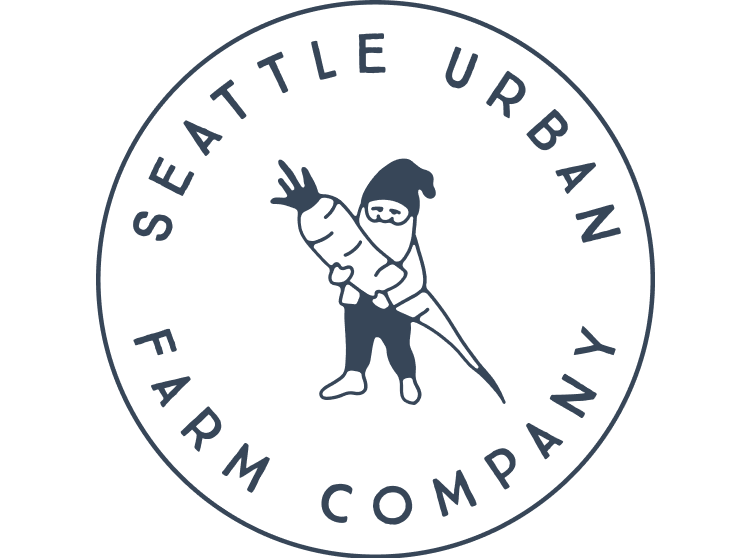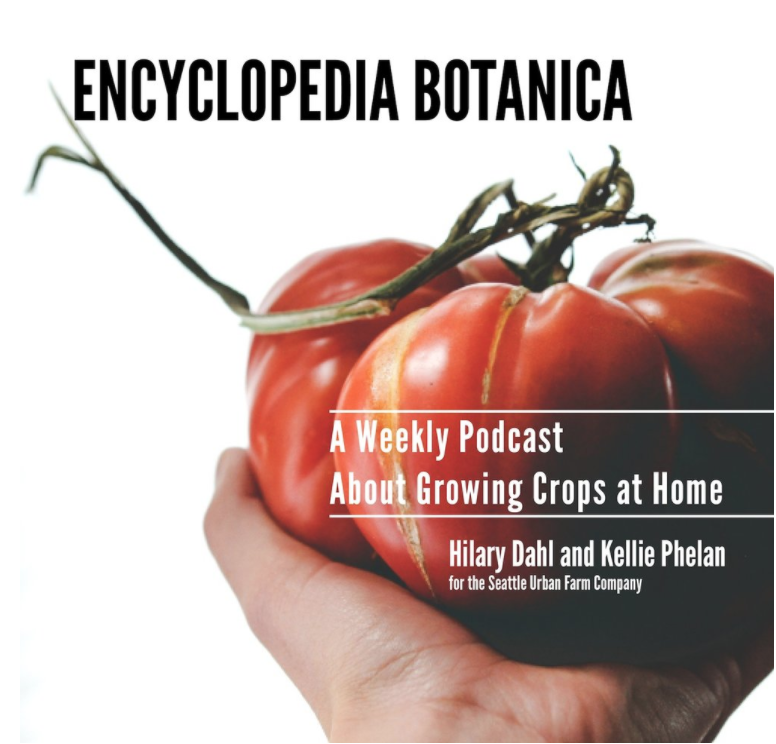Hello, I’m Hilary Dahl and this is Encyclopedia Botanica, a weekly podcast about edible gardening. This week we will be talking about harvesting your crops for maximum freshness and quality.
This is a little discussed but super important topic. Considering how much time and effort you have invested into your garden, the least you can do for yourself is to ensure that you pick your crops when they are at their peak. The taste, texture and storage life differential between a crop at its peak and one past its prime is enormous. Like anything else in gardening, the exact timing and methodology for harvesting will vary based on the species. The information we’ll talk about today is partially excerpted from our book High-Yield Vegetable Gardening, which also includes charts and graphs about harvest and storage temperatures for all of the crops. Today I’d like to explore some of the major concepts so that you can begin to watch your developing crops a little more closely and capture that extra goodness that comes from harvesting at the peak of perfection.
Unless you’re a middle school science teacher, you may not consider this on a regular basis, but your crops are always undergoing cellular respiration. Cellular respiration is a major part of the metabolic process. It releases energy to fuel plant growth by breaking down sugars and other nutrients. However, cellular respiration continues on in your harvested greens or fruit even after they have been picked from the plant. No longer actively participating in the metabolic process of the plant, this energy cycle continues to break down nutrients and begins to decompose the plant matter.
Interestingly, some vegetable crops have much higher cellular respiration rates than others, and the higher this rate, the faster the deterioration. Lettuce is a good example of a crop with a high respiration rate. You’ve probably seen this when you cut a head of lettuce and it starts to wilt almost immediately after harvest. The best way to extend the storage life of the lettuce and to maintain quality prior to eating, is to dunk or spray the greens with cold water as soon as possible after harvest. As a general rule, crops with high cellular respiration should be cooled as quickly as possible once harvested from the garden; thus slowing down the respiration process and extending the life of the harvest.
Crops with high respiration rates are best eaten as soon as possible after harvest. Fresh-picked ears of corn that are purchased from a farmers market or roadside stand are always tastier than corn that has been sitting in a grocery store for days. This is because sweet corn has a very high respiration rate. High respiration crops can be very satisfying to grow at home because you get to eat them at their peak. Other high respiration crops include: Asparagus, broccoli, peas, sweet corn, artichokes, Brussels sprouts, green onions and snap beans.
If you haven’t tried this before, I highly recommend picking an ear of corn out of the garden and eating it immediately, without cooking and even without taking the obligatory photo instagram. It can be a truly transcendental experience. Even more so with asparagus. Next time you see a nice, healthy spear of asparagus ready to pick, cut it off and eat it raw right there in the garden. I think you’ll find it's almost an entirely different food, extremely tender and sweet.
One of the easiest ways to ensure post-harvest quality is to pick your crops at an appropriate time of day.
If a high respiration crop needs to be cooled to preserve its post-harvest quality, it makes sense to harvest it when the air temperature is cooler. If you cut a head of lettuce or pick a bunch of kale at noon when it’s 80 degrees outside and leave them in the sun for even a few minutes, they will quickly wilt. However, if you pick them at 7:00 in the morning when the temperature is only 60 degrees, they will hold their quality much longer.
Additionally, many crops store best at high humidity levels because it will help them stay hydrated and crisp. If you pick these crops when there’s still dew on them, it’s easier to maintain an appropriate humidity level after harvesting. Some large commercial lettuce operations actually do their harvesting at night because it saves them a lot of time and energy that would otherwise need to be spent on cooling and hydrating the lettuce.
In contrast to lettuce, some crops keep best when harvested after the dew has burned off, like tomatoes and cucumbers. These crops can be more prone to rot after harvest if their outer surface is wet.
A good strategy is to pick crops that like to be cool and wet early in the morning, and to pick crops that like to be dry in the mid-day or evening when dew has burned off.
For small quantities, all you need to do is harvest your crops when it’s cool outside and there’s still dew on the leaves, place them in a plastic bag, and set them in the fridge. The bag keeps the humidity high, and the fridge quickly cools things down. Be careful not to jam too much produce into a small drawer or compartment; air circulation around the bags is important to cool the crops. If you need to keep the produce outside for a while, bag it to maintain humidity and be sure to keep it in the shade. You might give each bag a spritz of water if the crop is completely dry at harvest time.
If the crops are dirty and/or were harvested during the heat of the day, place them in a colander and give them a good rinsing. This will clean them up and cool them down. For mixed lettuces and salad greens like arugula, mizuna, or baby spinach, a salad spinner works well for drying before packing. For larger quantities, fill a mesh laundry bag and spin it around by hand (be sure to wash and dry the mesh bag in between uses.
In contrast to these cool, wet crops; there are a bunch of crops that prefer to be picked when warm and dry. Examples include Potatoes, eggplant, tomatoes, peppers, squash, cucumbers, melons, beans and alliums.
This makes harvesting easy because all you need to do is wait until the dew has dried off and then start picking. If the crops need to be cleaned or are still a little damp with dew, most of them can be wiped off with a dry rag, or wear soft cotton gloves while you’re harvesting and wipe them off as you pick.
Most of crops that like to be dry also don’t mind being a little warmer at harvest time. If you’ll be eating them soon, don’t worry about cooling down your tomatoes or squash, just pick them and store them at room temperature until they’re ready to use. Some storage crops like onions, garlic and potatoes need to be cured before storage and we’ll discuss this during next week’s show.
Well, hopefully that covers some of the basics of harvest science and timing. There is plenty more to discuss on peak harvest techniques and we’ll continue to dig into these concepts in future episodes. Happy harvesting, I’ll see you next week when we begin to explore the wild world of curing and dry storage.







